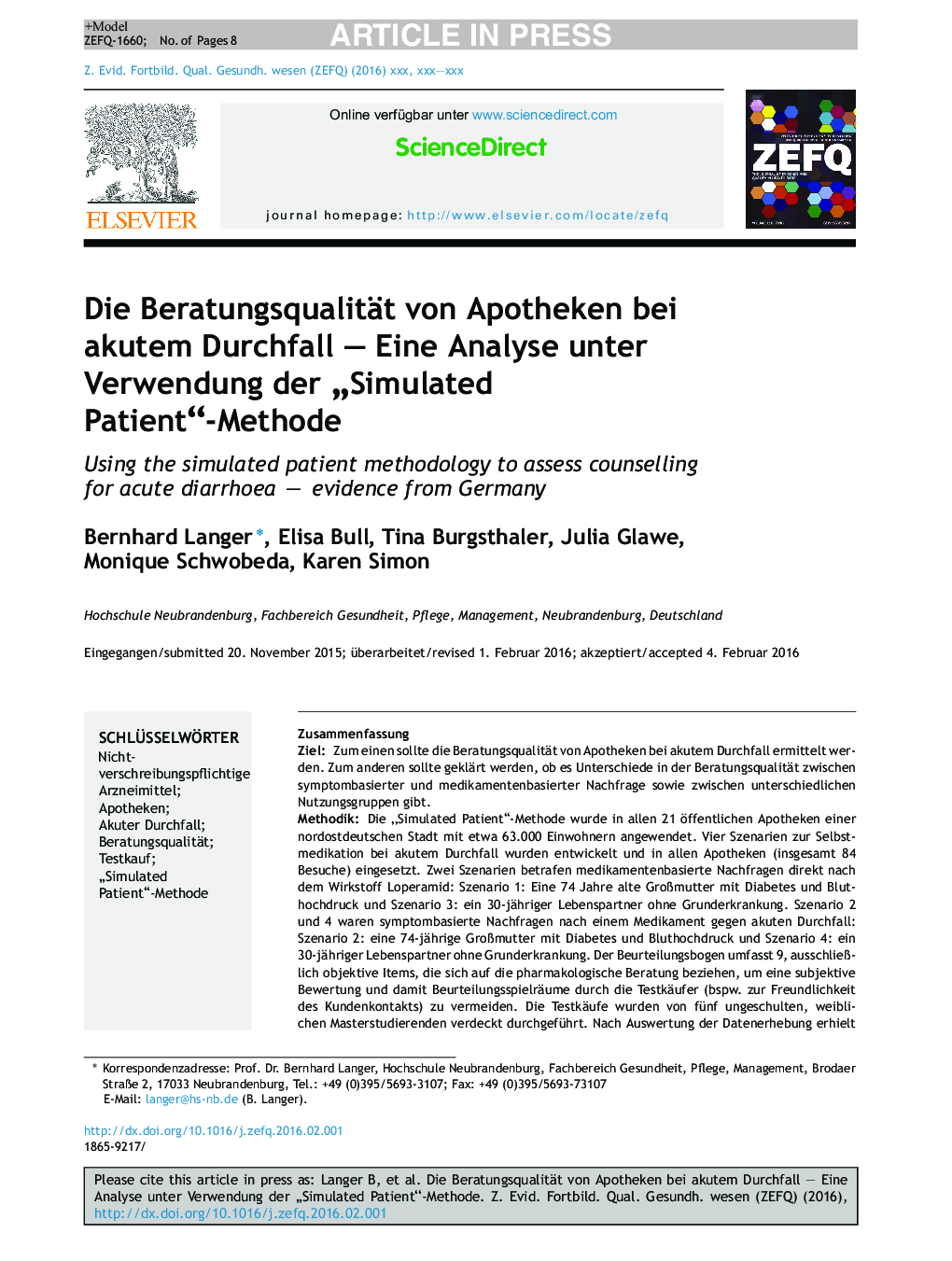| Article ID | Journal | Published Year | Pages | File Type |
|---|---|---|---|---|
| 7529900 | Zeitschrift für Evidenz, Fortbildung und Qualität im Gesundheitswesen | 2016 | 8 Pages |
Abstract
Overall, the quality of counselling was quite poor (277 out of 756 possible points). The most commonly provided information was dosage (86.9Â %); information on adverse effects was least commonly provided (3.6Â %). Furthermore, there was a huge difference in the counselling quality between the pharmacies (minimum 4 points, maximum 20 points out of 36 possible points). The symptom-based requests scored significantly better (95 and 85 out of 189 possible points) than the direct product-based requests (42 and 55 out of 189 possible points). The symptom-based requests had a significantly better counselling quality for an older woman with primary disease than for a younger man without any primary disease. This difference was not observed with the direct product-based requests.
Related Topics
Health Sciences
Medicine and Dentistry
Public Health and Health Policy
Authors
Bernhard Langer, Elisa Bull, Tina Burgsthaler, Julia Glawe, Monique Schwobeda, Karen Simon,
